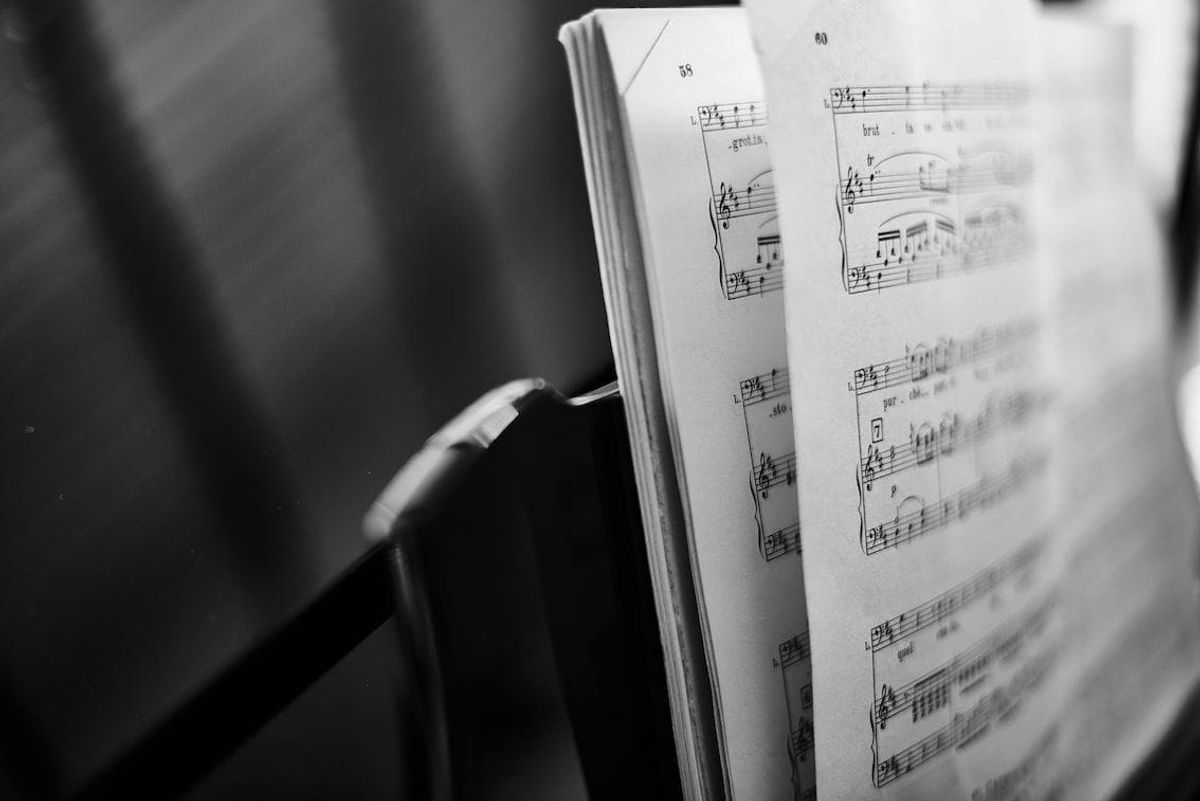The Bel Canto Technique of Singing

Bel canto is often considered one of the most beautiful and sophisticated singing styles in classical music.
Quick Summary
The bel canto technique, meaning "beautiful singing," emphasizes vocal agility, expressive beauty, and seamless transitions between registers. It flourished in the late 18th and early 19th centuries, significantly influencing operas by Rossini, Bellini, and Donizetti. Aspiring vocalists must focus on breath control, dynamic contrast, and emotional storytelling while mastering intricate ornamentation. This timeless style continues to inspire modern singers, enhancing their artistry across various
Rooted in the operatic traditions of the 18th and early 19th centuries, this technique has captured the hearts of many listeners and singers alike with its focus on vocal agility, control, and expressive beauty.
But what exactly is the bel canto technique of singing, and how can aspiring vocalists learn to master it?
Remember, while this blog post offers some ideas, it's essential to conduct your own research to tailor these ideas to individual needs.
What Is the Bel Canto Technique of Singing?

The term bel canto, which translates from Italian as "beautiful singing," denotes a particular approach to voice production and vocal artistry.
This technique was prominent in the bel canto era, particularly during the late 18th and early 19th century, and it has influenced many famous operas from composers like Gioachino Rossini, Vincenzo Bellini, and Gaetano Donizetti.
Bel canto operas, such as Donizetti'sLucia di Lammermooror Rossini'sIl Barbiere di Siviglia, require singers to navigate elaborate ornamentation and execute virtuosic vocal accomplishments, often with effortless precision and grace.
This singing technique emphasizes the beautiful tone, seamless transitions between vocal registers, dynamic contrast, and the ability to "spin" vocal phrases with clarity.
The bel canto singing technique is all about making the voice sound as natural, beautiful, and expressive as possible.
This requires not only physical control, such as using diaphragm muscles and manipulating the soft palate but also an understanding of the dramatic singing elements that give bel canto its unique character.
The Key Elements of Bel Canto Singing Technique

Vocal Technique and Beautiful Tone
Bel canto is often distinguished by its emphasis on vocal technique and the pursuit of a beautiful tone. Unlike other styles of operatic singing, bel canto requires a singer to make every note sound effortless and polished.
This is where voice production plays a crucial role—a bel canto singer focuses on creating a ringing tone supported by proper use of the diaphragm muscles.
The bel canto technique of singing relies heavily on vocal exercises that develop the "head voice" and strengthen control over the entire vocal range, including lower notes and higher notes. Many singing teachers have historically emphasized the importance of singing with balance and consistency across the vocal registers.
This ensures that transitions between lower notes and higher notes are smooth, allowing for seamless, beautiful sound throughout the performance.
To master the bel canto technique, singers need to work on spinning vocal phrases, which involves creating long, smooth vocal lines that sound both natural and controlled. This practice helps singers develop a sustained, "spinning" quality to each note, which is a hallmark of the bel canto style.
Dynamic Contrast and Expressiveness
Another key feature of bel canto is its focus on dynamic contrast and expressive interpretation.
Composers of bel canto operas, such as Bellini and Rossini, wrote music that demands flexibility from the singer—a range of volumes, from soft, subtle singing to powerful, dramatic climaxes.
The bel canto style requires a delicate balance between expressiveness and control. Opera singers must not only achieve technically challenging notes but also convey the emotions and narrative of the character they are portraying.
Great singers brought drama to every performance through their mastery of both vocal technique and emotional expression. This combination of beautiful tone and passionate storytelling is what made bel canto operatic singing so captivating during its height in the 19th century.
Bel canto operas often require the singer to add elaborate ornamentation, particularly in the arias.
These ornaments—whether high notes, trills, or rapid runs—give the music its characteristically embellished sound, which requires a high level of vocal agility and breath control to perform effectively.
The Bel Canto Singing Style in the Opera World

Operatic Training for Classical Singers
Bel canto remains a crucial part of operatic training for many classical singers. Its influence is felt not only in Italian opera but also in how vocal technique is taught in singing academies worldwide.
The bel canto method emphasizes the importance of voice production and consistent tone quality, regardless of volume or pitch.
For those wanting to master the bel canto style, training often involves working with singing teachers who specialize in Italian singing traditions.
These experts can provide guidance on voice placement, breathing techniques, and how to develop the "ringing" tone that characterizes the bel canto era.
Vocal exercises focused on developing vocal agility, control, and consistency are fundamental to this approach.
The human voice is one of the most powerful instruments, capable of conveying emotion and complexity. Bel canto takes full advantage of this, demanding a high level of skill to not only sing but also to communicate the depth of the music's emotional content.
Singers may work on exercises that develop their soft palate and diaphragm muscles, focusing on producing a beautiful, even tone throughout the singing voice.
Learning Bel Canto: Techniques and Practical Tips

Vocal Agility and Elaborate Ornamentation
One of the most defining features of bel canto is the emphasis on vocal agility. In the bel canto style, operatic singing is characterized by rapid runs, intricate trills, and the ability to perform elaborate ornamentation with ease.
Practicing bel canto requires singers to master vocal exercises that build control and flexibility.
Singing teachers may focus on exercises that help develop fast-moving vocal lines, such as scales, arpeggios, and other forms of melisma.
This builds the technical foundation necessary for bel canto, allowing the singer to smoothly execute the ornate passages that are often found in works likeBellini's NormaorDonizetti's Lucia di Lammermoor.
Working on agility is not only about singing quickly but also about maintaining clarity and precision, even at high speeds.
For modern singers looking to incorporate bel canto elements into their repertoire, learning how to approach these elaborate vocal lines can be one of the most rewarding challenges. The careful practice of bel canto techniques allows singers to develop greater overall control of their vocal instrument, making it easier to adapt to a wide variety of other styles, whether classical or contemporary.
Practical Considerations for Bel Canto Opera Performances

Breath Control and Support
Breath control is one of the fundamental aspects of bel canto singing. The bel canto technique requires singers to manage their breath effectively, allowing for long, sustained phrases and elaborate ornamentation without strain.
Proper use of the diaphragm muscles and control of breath flow are crucial for achieving the effortless sound that bel canto demands.
Singers often practice specific breathing exercises to build stamina and improve breath support. These exercises help maintain the steady airflow required to produce a consistent vocal tone and sustain long, spinning phrases.
Developing a strong core, along with an understanding of how to use the breath to support the voice, is essential for mastering bel canto singing.
Bel canto operas, likeBellini's NormaorRossini's La Cenerentola, often feature arias that require a combination of soft, lyrical passages and powerful climaxes. Achieving this range of dynamics while maintaining a beautiful tone is where breath control becomes indispensable.
Many singers work closely with vocal coaches to refine this skill, focusing on using breath as the foundation of their singing.
Emotional Storytelling Through Bel Canto

Bel canto is not only about technical precision; it is also about conveying deep emotion through music.
The dramatic operas of the bel canto era require singers to embody their characters fully, using their voices to express love, longing, despair, or joy. This makes bel canto operatic singing a blend of vocal excellence and theatrical artistry.
Great opera singers became iconic because of their ability to bring the characters they portrayed to life with authenticity and passion.
The bel canto technique allows for this kind of expressiveness by providing singers with the tools to shape their vocal delivery in nuanced and dynamic ways.
Being able to connect with the audience on an emotional level is super important for a great bel canto performance. Singers may use subtle variations in dynamics, phrasing, and articulation to convey the shifting moods of the music and the story.
This connection between vocal technique and emotional storytelling is what sets bel canto apart from other singing styles.
The Influence of Bel Canto on Modern Singing
While bel canto originated in the early 19th century, its influence is still seen today across various genres of music.
The bel canto technique of singing has inspired countless classical singers and even made its way into contemporary music. Many singers continue to study bel canto as a way of developing strong foundational skills that can be applied to different singing styles.
The emphasis on beautiful tone, vocal agility, and expressive delivery in bel canto resonates with singers from all backgrounds. Techniques such as breath control, vocal range development, and the use of head voice are not only applicable to classical opera but also to genres like musical theatre and pop music.
The bel canto style serves as a reminder of the importance of vocal health, artistry, and technical excellence.
Today, singers who wish to incorporate the bel canto method into their performances may find that its principles help them achieve a more refined, versatile singing voice.
Conclusion: The Timeless Art of Bel Canto Singing

Bel canto is more than just a singing technique; it is an art form that celebrates the beauty and expressiveness of the human voice.
From its roots in Italian opera to its lasting influence on modern music, the bel canto technique of singing continues to inspire singers to strive for vocal excellence and emotional depth.
Learning bel canto requires dedication, patience, and a willingness to explore the full potential of one's voice.
Whether performingBellini's Norma,Donizetti's Lucia di Lammermoor, or exploring other genres, the principles of bel canto provide a foundation for beautiful, expressive singing that connects with audiences on a profound level.
With careful practice, a focus on vocal health, and a passion for storytelling, singers can bring the magic of bel canto to life and ensure that this exquisite style continues to enchant audiences for generations to come.